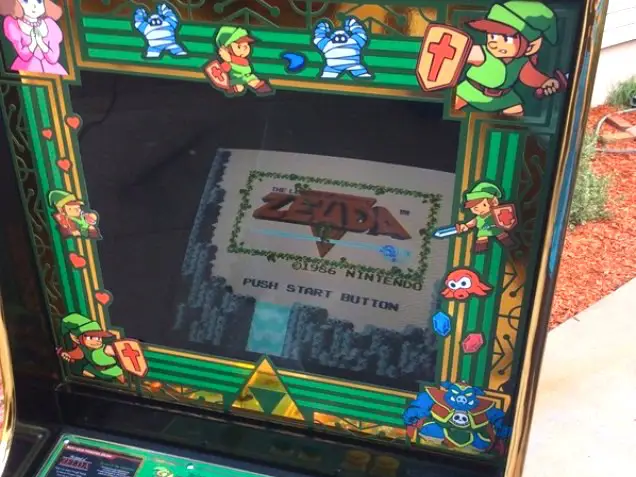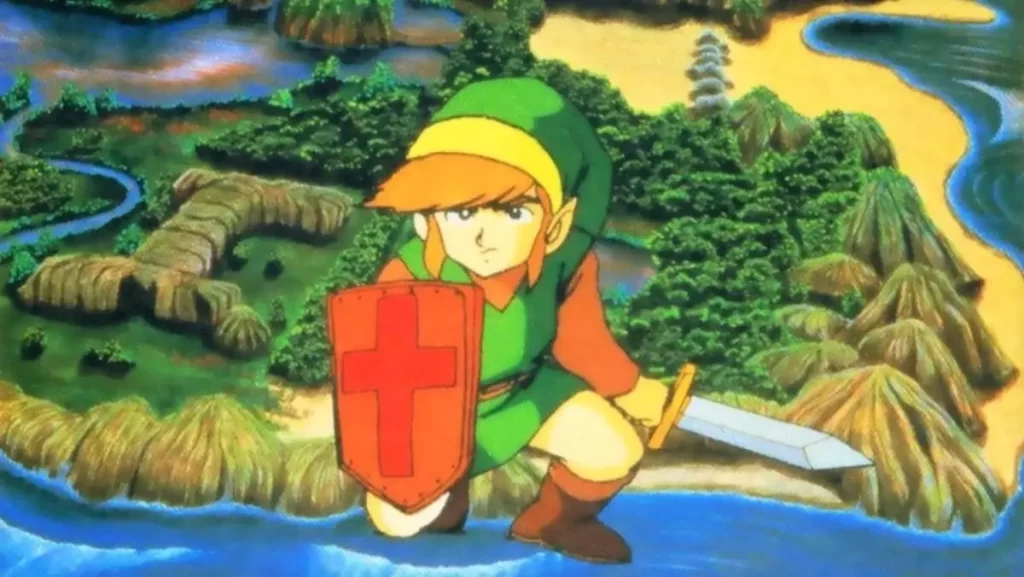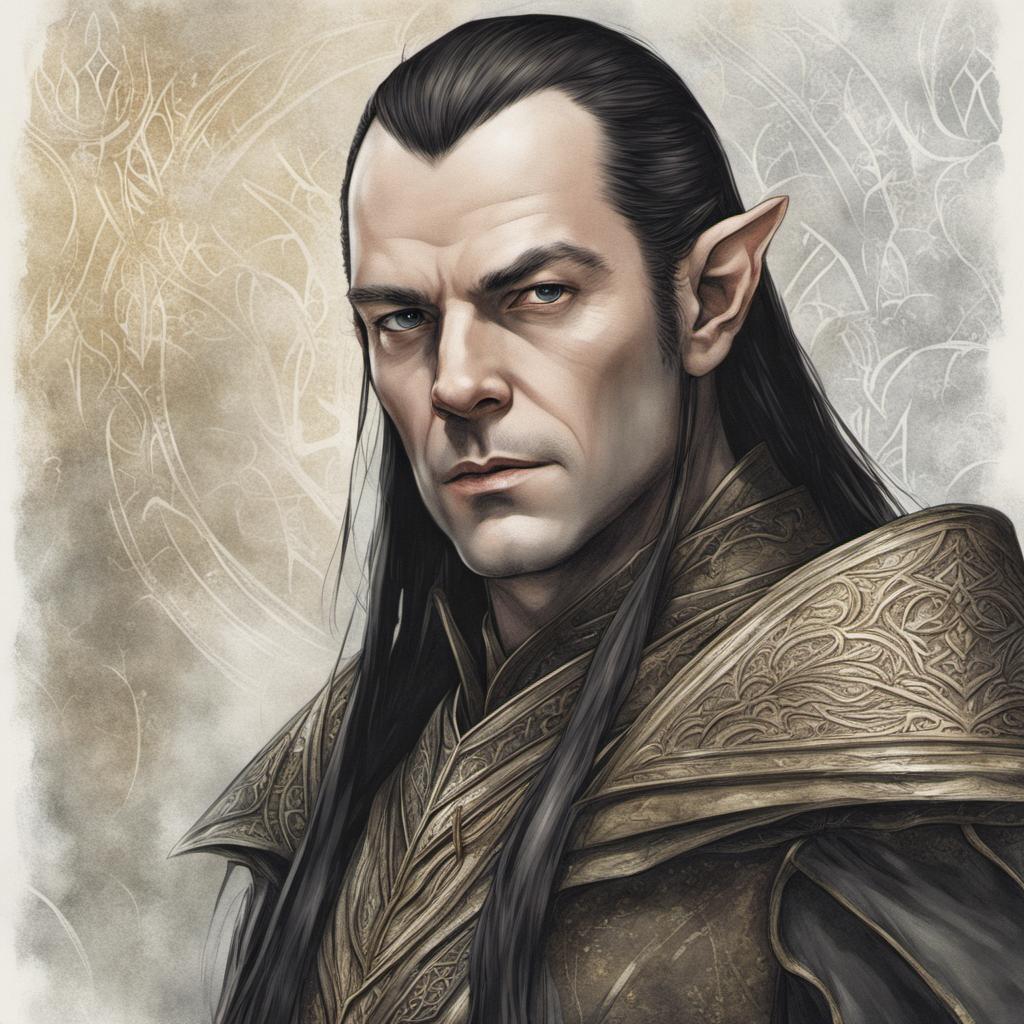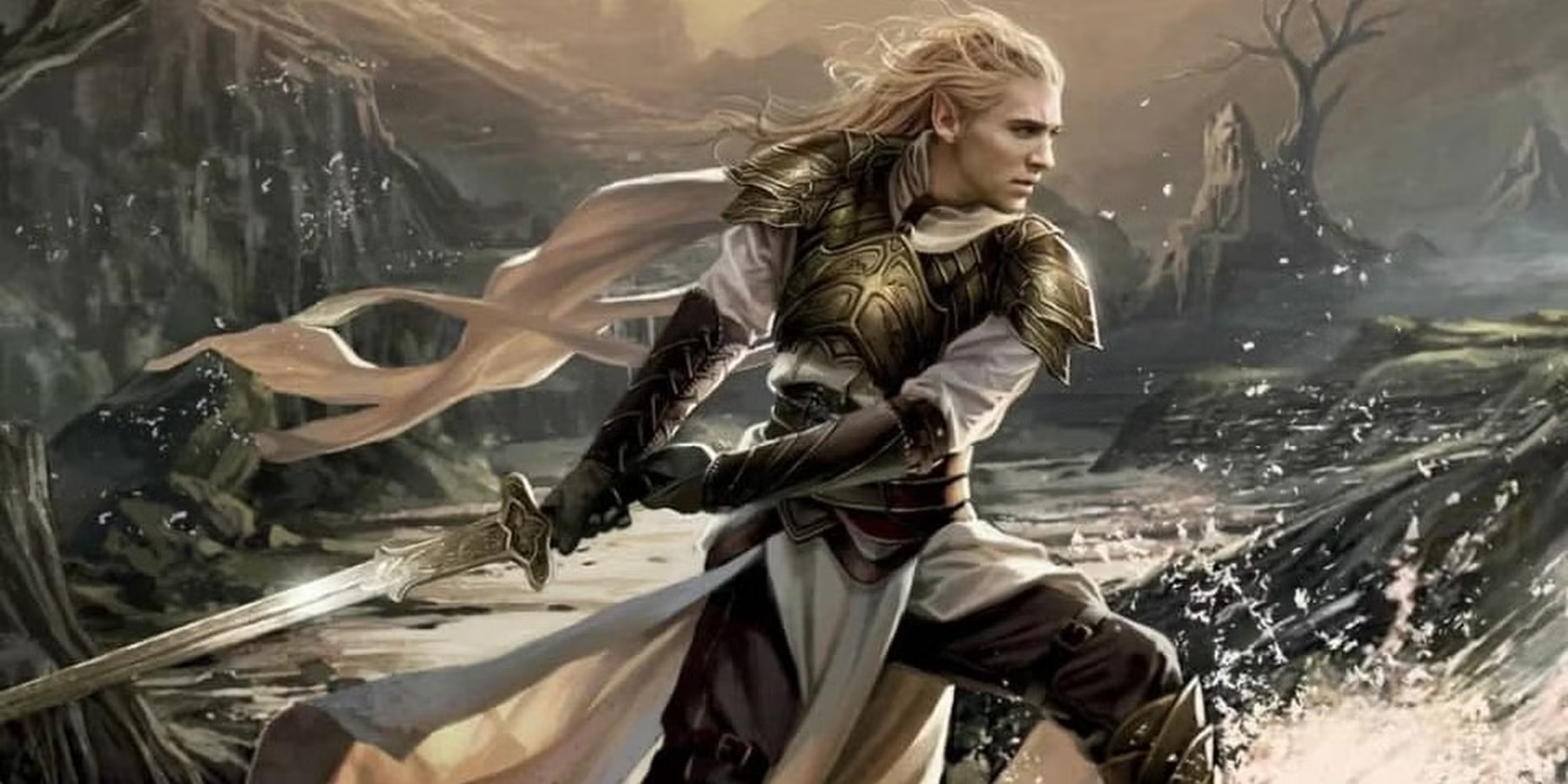Table of Contents
The Birth of a Legend
Released in 1986 for the Famicom Disk System in Japan and later for the Nintendo Entertainment System (NES) worldwide, The Legend of Zelda redefined the action-adventure genre. Developed by the legendary Shigeru Miyamoto and Takashi Tezuka, the game introduced players to the fantastical world of Hyrule, where exploration and discovery were key. Its open-world structure, a rarity at the time, encouraged players to uncover secrets, solve puzzles, and combat a variety of enemies at their own pace. Unlike many games of its era, it offered a non-linear experience, allowing players to decide their own path through the game’s dungeons and overworld. This freedom marked a turning point in game design, inspiring countless titles in the years to come.
To further enhance its groundbreaking gameplay, The Legend of Zelda became the first home console game in the U.S. to utilize a cartridge with a built-in battery for saving progress. This innovation eliminated the need for passwords and allowed players to resume their journey without restarting, a game-changer for the era. The ability to save progress not only made the game more accessible but also set a new standard for adventure games, paving the way for more complex and expansive narratives. By combining revolutionary features with immersive gameplay, the title cemented itself as a cornerstone in video game history.
The Story of Courage and Wisdom
At the heart of The Legend of Zelda lies a timeless tale of heroism, as players take on the role of Link, a courageous young hero determined to rescue Princess Zelda and save the kingdom of Hyrule. The narrative begins with Zelda’s decision to shatter the Triforce of Wisdom into eight pieces and scatter them across dangerous dungeons, safeguarding the kingdom from Ganon’s growing power. This act of foresight by the princess set the stage for a challenging adventure where Link must confront numerous foes, solve intricate puzzles, and navigate treacherous landscapes to reassemble the Triforce. The story’s blend of mystery, strategy, and exploration captivated players, drawing them into a richly detailed fantasy world.
What made The Legend of Zelda particularly engaging was its seamless integration of story and gameplay. Each piece of the Triforce served not only as a plot device but also as a tangible reward for players’ perseverance and problem-solving skills. Ganon’s theft of the Triforce of Power created a constant sense of urgency, driving players to push through increasingly difficult challenges. The journey through labyrinthine dungeons, filled with unique enemies and hidden treasures, mirrored Link’s growth as a hero, embodying the themes of courage and wisdom. This compelling narrative structure laid the groundwork for what would become one of gaming’s most beloved franchises.
Gameplay That Defined a Genre
When The Legend of Zelda was released, it redefined the possibilities of video game design by blending action, exploration, and puzzle-solving into a seamless experience. Players guided Link through a sprawling overworld, facing enemies and uncovering hidden paths in a top-down perspective that invited curiosity and strategy. The game introduced a sense of growth as Link’s arsenal expanded with iconic items like the boomerang, bow, and magical recorder. These tools served dual purposes, offering combat advantages while unlocking new areas and solving intricate puzzles. The unique blend of mechanics encouraged players to think critically and rewarded their ingenuity with secrets and treasures, setting a new benchmark for adventure games.
What made The Legend of Zelda revolutionary was its nonlinear progression system, which gave players the freedom to explore Hyrule at their own pace. Optional paths, hidden dungeons, and powerful rewards encouraged exploration, ensuring no two playthroughs were exactly the same. This flexibility allowed players to forge their own adventure while mastering the game’s challenges. By blending diverse gameplay elements with innovative design, it created a sense of immersion that kept players engaged and returning for more. This groundbreaking approach not only defined the action-adventure genre but also cemented the game’s legacy as a timeless classic.
The Overworld and Dungeons
The expansive overworld in The Legend of Zelda was groundbreaking, offering players a vast, open map filled with diverse landscapes such as dense forests, arid deserts, and shimmering lakes. Hidden within these areas were secret caves, treasure chests, and valuable upgrades that rewarded curiosity and exploration. The freedom to roam and discover at one’s own pace made the world of Hyrule feel alive and immersive. Players were constantly driven to investigate every corner of the map, uncovering items like heart containers and rupees that were essential for survival and progression. This open-ended design allowed for personal adventure and set a new standard for exploration in video games.
The dungeons in The Legend of Zelda presented a different kind of challenge, with each of the eight labyrinths uniquely designed to test players’ combat skills, problem-solving abilities, and resourcefulness. These dungeons housed menacing bosses such as Aquamentus, Dodongo, and Gohma, each requiring a specific strategy to defeat. Puzzles within the rooms added another layer of complexity, ranging from block-moving challenges to uncovering hidden doors. Successfully navigating these dungeons provided players with fragments of the Triforce, creating a satisfying loop of risk and reward. The combination of a sprawling overworld and intricate dungeons ensured the game’s place as a defining entry in gaming history.
The Second Quest: A New Challenge
One of the most innovative features of The Legend of Zelda was its “Second Quest,” a hidden mode that unlocked after players completed the game. This advanced version reimagined the original experience with more difficult enemies, redesigned dungeons, and new challenges to uncover. Accessible by either finishing the game or naming a save file “ZELDA,” the Second Quest offered a thrilling way to extend the adventure. This creative addition demonstrated Nintendo’s forward-thinking design, giving players a reason to revisit the game and uncover its deeper secrets. For 1980s gamers, this level of replayability was unprecedented and set the title apart as a truly groundbreaking experience.
The Second Quest solidified The Legend of Zelda as a game that valued player dedication. The newly designed dungeons demanded mastery of mechanics, as familiar strategies often no longer worked against stronger enemies and intricate puzzles. Additionally, hidden items and altered pathways challenged even seasoned players, ensuring that the game’s world felt fresh and unpredictable. This advanced mode underscored the game’s non-linear nature, as players could once again explore Hyrule at their own pace while encountering surprises at every turn. The Second Quest became a defining feature, further cementing the game’s legacy as a genre-defining classic.
Development Innovations
The creation of The Legend of Zelda was deeply inspired by the childhood experiences of Shigeru Miyamoto and Takashi Tezuka, who both fondly recalled exploring caves, forests, and hidden paths near their homes. These memories of adventure and discovery shaped the game’s open-world design, where players could wander freely and uncover secrets at their own pace. This non-linear structure was groundbreaking at the time, encouraging players to experiment and explore every nook and cranny of Hyrule. The developers also implemented interactive elements, such as cryptic hints from NPCs, to evoke the thrill of solving puzzles and navigating unknown territories.
In addition to its innovative gameplay, The Legend of Zelda promoted communication and collaboration among players. The game’s cryptic design, including hidden caves and unmarked dungeon entrances, made sharing tips and strategies a vital part of the experience. Nintendo even embraced this community-driven approach by highlighting player-contributed secrets in publications like Nintendo Power. This emphasis on social interaction not only fostered a sense of camaraderie among fans but also made the game feel deeply personal. By weaving these elements into its core, The Legend of Zelda redefined how games could create lasting memories through shared exploration and discovery.

A Musical Masterpiece
Koji Kondo’s contribution to The Legend of Zelda transformed the game into a cultural phenomenon, with music that resonated deeply with players. Composed in just one day, the overworld theme became instantly iconic, setting the tone for adventure and exploration in Hyrule. Its upbeat melody encouraged players to forge ahead through forests and mountains, perfectly encapsulating the thrill of discovery. The soundtrack’s technical limitations on the NES were overcome by Kondo’s creativity, as he used simple, looping melodies to evoke a sense of grandeur and timelessness. This innovative use of music solidified its place as one of gaming’s most memorable soundtracks.
What truly distinguished the music of The Legend of Zelda was its ability to enhance the emotional weight of the game. Each dungeon featured distinct atmospheric compositions that amplified the sense of danger and mystery, immersing players in their quest to recover the Triforce pieces. The subtle shifts in tone, from triumphant fanfares to suspenseful dungeon themes, mirrored the player’s journey and heightened the storytelling. Kondo’s talent for crafting emotionally charged yet minimalistic music ensured that the game’s score remained etched in players’ memories, becoming an inseparable part of the legendary experience.
Reception and Sales
The Legend of Zelda achieved remarkable success upon its release, selling over 6.5 million copies globally and solidifying its place in gaming history. It was the first NES title to surpass one million cartridge sales in the U.S. in 1987, a milestone that demonstrated its widespread appeal. Critics lauded the game’s innovative design, which combined an open-world format with an engaging narrative and challenging gameplay. The ability to save progress with a battery-backed cartridge was a revolutionary feature that elevated the gaming experience. These innovations helped position The Legend of Zelda as a pioneer in the action-adventure genre and a gold standard for future titles.
Beyond its commercial success, The Legend of Zelda left an indelible mark on gaming culture and storytelling. Reviewers praised its immersive world, where players could uncover hidden secrets and engage in a tale of courage and wisdom. Its success cemented Nintendo’s reputation as a leader in creative game development, inspiring other developers to push the boundaries of what video games could achieve. Decades later, the game remains a symbol of innovation and a beloved classic, consistently appearing on lists of the greatest video games of all time. This legacy underscores the timeless appeal and influence of the series’ groundbreaking debut.
Cultural Impact
The Legend of Zelda made an unforgettable mark on popular culture, with its iconic phrase, “It’s dangerous to go alone! Take this,” becoming a rallying cry for gamers worldwide. Spoken by the old man who gives Link his first sword, this line transcended the game, appearing in memes, parodies, and merchandise. It symbolizes the spirit of adventure and readiness to face challenges, resonating far beyond the confines of Hyrule. The game’s release in the mid-1980s contributed to the growing perception of video games as a legitimate art form capable of creating memorable stories and characters that endure through time.
From films and TV shows to modern-day gaming references, The Legend of Zelda has become a cultural cornerstone. Its influence is seen in everything from animated tributes in series like The Simpsons to nods in video games like Minecraft and World of Warcraft. The franchise also inspired a robust community of creators, including musicians, artists, and writers, who continue to celebrate its themes of bravery and exploration. This enduring relevance is a testament to the game’s profound impact, proving that its appeal extends far beyond the pixels of its original cartridge.

Re-Releases and Accessibility
The Legend of Zelda has maintained its relevance over decades, thanks to its availability on various platforms. Originally debuting on the NES, it was later re-released on the GameCube and Game Boy Advance, allowing fans to relive the classic adventure with modern hardware. The introduction of the Virtual Console on the Wii and 3DS expanded access further, bringing the timeless experience to newer audiences. These re-releases stayed faithful to the original gameplay while refining minor details, such as correcting spelling errors in the script. By keeping the core experience intact, Nintendo ensured that the magic of the game remained untarnished for both long-time fans and new players.
Today, The Legend of Zelda is more accessible than ever, thanks to its inclusion in the Nintendo Switch Online service. This platform allows players to experience the game with added convenience, making it easy to pause and resume their journey across Hyrule. By continuing to reintroduce the game to successive generations, Nintendo has cemented its legacy as a timeless classic. These efforts demonstrate the enduring appeal of the game and its ability to captivate players with its innovative gameplay and compelling narrative, ensuring its place in gaming history remains secure.
The Legacy of Hyrule
The Legend of Zelda series revolutionized the gaming industry by establishing the core elements that define one of the most celebrated franchises in history. It introduced iconic features such as the Triforce, Ganon, and Princess Zelda, forming the narrative and gameplay pillars that persist in every subsequent installment. This 1986 classic was groundbreaking, not only for its open-world design but also for the sense of freedom it gave players to explore Hyrule at their own pace. The inclusion of secrets, puzzles, and a non-linear structure set a precedent for future adventure games, making it a template for innovation in game design.
Beyond its immediate impact, The Legend of Zelda’s legacy can be seen in the broader gaming landscape. Its influence is particularly evident in titles like Final Fantasy, The Elder Scrolls, and countless other open-world games that prioritize exploration and discovery. The game’s pioneering mechanics have inspired developers to push boundaries, creating immersive experiences that resonate with players decades later. By blending action, strategy, and storytelling, the game secured its place as a timeless masterpiece, cementing Hyrule as one of the most iconic settings in gaming history.
Why It Endures
Decades after its debut, The Legend of Zelda continues to captivate audiences with its timeless appeal and innovative gameplay. Its seamless blend of action, exploration, and puzzle-solving set the standard for the adventure genre, while its non-linear design gave players unparalleled freedom to chart their own paths. The game’s iconic story, centered around Link’s quest to rescue Princess Zelda and defeat Ganon, resonates across generations, offering a sense of heroism and discovery that never feels outdated. Its influence extends far beyond its era, making it a touchstone for modern game design and a beloved title among fans.
Part of what keeps The Legend of Zelda relevant is the sense of wonder it instills in players. Whether they are uncovering secrets hidden in Hyrule’s sprawling overworld or solving the intricate puzzles within its dungeons, gamers experience a unique blend of challenge and reward that keeps them engaged. For newcomers, it offers a glimpse into the origins of a legendary franchise, while longtime fans revisit it to relive cherished memories. Its pioneering spirit, combined with its enduring charm, ensures its place as a masterpiece that remains as engaging today as it was at its release.
How useful was this post?
Click on a star to rate it!
Average rating / 5. Vote count:
No votes so far! Be the first to rate this post.
Author
-
Meet Dr. Kendall Gregory, a highly accomplished professional with a remarkable academic background and a deep passion for empowering individuals through knowledge. Dr. Gregory’s educational journey began with a Bachelor of Science degree, followed by a Doctor of Chiropractic Medicine, focusing on diagnosing and treating musculoskeletal conditions. He further expanded his expertise with a Master's degree in Oriental Medicine, specializing in acupuncture and Chinese herbology, and a Master's degree in Health Care Administration, emphasizing his dedication to improving healthcare systems. Dr. Gregory combines his extensive knowledge and practical experience to provide comprehensive and integrative healthcare solutions. Through his writings, he aims to inspire individuals to take charge of their health and make informed decisions.
View all posts







